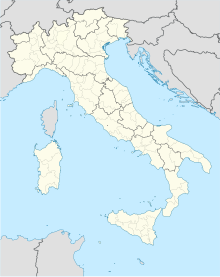
Back مقياس التداخل فيرجو Arabic VIRGO Catalan Virgo (detektor) Czech Virgo (Gravitationswellendetektor) German Virgo (interferómetro) Spanish تداخل سنج ویرگو Persian Virgo (interféromètre) French Interferometro VIRGO Italian Virgo Japanese VIRGO 간섭계 Korean
 Country with institutions contributing to EGO and the Virgo Collaboration Country with institutions contributing to the Virgo Collaboration | |
| Formation | 1993 |
|---|---|
| Type | International scientific collaboration |
| Purpose | Gravitational wave detection |
| Headquarters | European Gravitational Observatory |
| Location | |
| Coordinates | 43°37′53″N 10°30′16″E / 43.6313°N 10.5045°E |
Region | Italy |
| Fields | Basic research |
Spokesperson | Gianluca Gemme |
| Affiliations | LVK (LIGO-Virgo-KAGRA collaboration) |
Budget | About ten million euros per year |
Staff | Around 850 people participate in the Virgo Collaboration |
| Website | www |
The Virgo interferometer is a large Michelson interferometer designed to detect the gravitational waves predicted by general relativity. It is in Santo Stefano a Macerata, near the city of Pisa, Italy. The instrument's two arms are three kilometres long and contain its mirrors and instrumentation inside an ultra-high vacuum.
Virgo is hosted by the European Gravitational Observatory (EGO), a consortium founded by the French Centre National de la Recherche Scientifique (CNRS) and Italian Istituto Nazionale di Fisica Nucleare (INFN).[1] The Virgo Collaboration operates the detector and defines the strategy and policy for its use and upgrades. It is composed of several hundreds of members across 16 different countries.[2] These operations are carried out jointly with other similar detectors, including the two LIGO interferometers in the United States (at the Hanford Site and in Livingston, Louisiana) and the Japanese interferometer KAGRA (in the Kamioka mine). Cooperation between several detectors is crucial for detecting gravitational waves and pinpointing their origin, which is why the LIGO and Virgo collaborations have been sharing their data since 2007, with KAGRA joining in 2019 to form the LIGO-Virgo-KAGRA (LVK) collaboration.[3]
The interferometer is named after the Virgo Cluster, a cluster of about 1,500 galaxies in the Virgo constellation, about 50 million light-years from Earth. Founded at a time when gravitational waves were only a prediction by general relativity, it has now participated in detecting multiple gravitational wave events, making its first detection in 2017 (jointly with the two LIGO detectors), quickly followed by the GW170817 event, the only one to have also been observed with classical methods (optical, gamma-ray, X-ray and radio telescopes) as of 2024.[4] The detector currently participates in joint observing runs with the other detectors, separated by commissioning periods during which the detector is upgraded to increase its sensitivity and scientific output.[5]
- ^ "Our mission". www.ego-gw.it. European Gravitational Observatory. Retrieved 11 October 2023.
- ^ "The Virgo Collaboration". virgo-gw.eu. The Virgo Collaboration. 18 February 2021. Retrieved 11 October 2023.
- ^ Cite error: The named reference
:26was invoked but never defined (see the help page). - ^ Cite error: The named reference
:20was invoked but never defined (see the help page). - ^ Cite error: The named reference
:3was invoked but never defined (see the help page).
